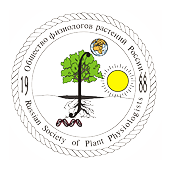Новости науки и практики // Ноябрь 2024

Scientists develop new approach to analyze 3D structure of lab-made photosynthetic antenna
Humans can do plenty, but plants have an ability we don't: they make energy straight from sunlight, a superpower called photosynthesis. Yet new research shows that scientists are closing that gap.
https://academic.oup.com/pnasnexus/article/3/9/pgae405/7774568
Intensive leaf cooling promotes tree survival during a record heatwave
Posch et al show that the riparian tree Populus fremontii is highly efficient at leaf cooling via transpiration, even when air temperature exceeds 48 °C.
https://www.pnas.org/doi/10.1073/pnas.2408583121
Evolution of Thylakoid Structural Diversity
Perez-Boerema et al highlight the structural diversity of thylakoids, following the evolutionary history of phototrophic species. We begin with a molecular inventory of different thylakoid components and then illustrate how these building blocks are integrated to form membrane networks with diverse architectures.
https://www.annualreviews.org/content/journals/10.1146/annurev-cellbio-120823-022747
New salicylic acid-based strategy could balance disease resistance with plant growth
Researchers at the University of Georgia have identified a promising approach to addressing a longstanding challenge for plant geneticists: balancing disease resistance and growth in plants.
https://phys.org/news/2024-10-salicylic-acid-based-strategy-disease.html
https://academic.oup.com/plcell/article/36/10/4293/7721303
Цианобактерии готовятся к холодам заранее
По изменению светового дня цианобактерии предчувствуют скорые холода и меняют химический состав собственных мембран, чтобы те не стали слишком вязкими.
https://www.nkj.ru/news/51010/
Histone modifications affecting plant dormancy and dormancy release: common regulatory effects on hormone metabolism
In this review, Sato & Yamane focus on seed dormancy and bud dormancy, which are critical for adaptation to fluctuating environmental conditions. They provide an overview of the physiological characteristics of both types of dormancy as well as the importance of the phytohormones abscisic acid and gibberellin for establishing and releasing dormancy, respectively.
https://academic.oup.com/jxb/article-abstract/75/19/6142/7667488
International team discovers small molecules that regulate how fast plant leaves age
Two small molecules that are produced by the plant Arabidopsis thaliana are shown to have the opposite effect on how fast its leaves age. The molecules are peptides, short chains of amino acids. While the peptide SCOOP10 accelerates aging, SCOOP12 suppresses it. Together, these peptides are thought to regulate the aging process in plants.
https://www.sciencedirect.com/science/article/pii/S1674205224003320
Researchers discover how plants produce a novel anti-stress molecule
New research identifies for the first time the genes that help plants grow under stressful conditions -- with implications for producing more sustainable food crops in the face of global climate change. The study reveals the genes that enable plants to make a novel anti-stress molecule called dimethylsulfoniopropionate, or DMSP. It shows that most plants make DMSP, but that high-level DMSP production allows plants to grow at the coast, for example in salty conditions.
https://www.sciencedaily.com/releases/2024/10/241009122515.htm
Stem cell-like approach in plants sheds light on specialized cell wall formation
A new method developed by Penn State biologists allows them to turn stripped-down plant cells into other types of cells, similar to the way stem cells differentiate into different cell types. Using this method, the research team explored the banding patterns that increase the stability of plant cell walls—much like the corrugated patterns in cardboard—and how they are created. Additionally, the researchers revealed how the assembly of these structures can go astray in different mutant plant cells, which they said could ultimately inform methods to break down plant cells for biofuels.
https://phys.org/news/2024-10-stem-cell-approach-specialized-wall.html
A new piece in the grass pea puzzle: Updated genome sequence published
An international research collaboration has completed the most detailed genome assembly to date of grass pea (Lathyrus sativus).
https://www.nature.com/articles/s41597-024-03868-y
How plants compete for light: Researchers discover new mechanism in shade avoidance
Plants that are close together do everything they can to intercept light. This "shade avoidance" response has been extensively researched. It is therefore even more remarkable that researchers from the laboratory of Molecular Biology at Wageningen University have discovered another entirely new mechanism: the important role of the hormone cytokinin.
https://phys.org/news/2024-10-mechanism.html
Researchers discover new insights into bacterial photosynthesis
Researchers have discovered new understanding of bacterial photosynthesis. Using cutting-edge techniques, investigators have unveiled intricate detailed images of the key photosynthetic protein complexes of purple bacteria. These images shed new light on how these microorganisms harness solar energy.
https://www.sciencedaily.com/releases/2024/10/241009144858.htm
Новости
Новости науки и практики // Ноябрь 2024
Обзор научных новостей, опубликованных во всемирной паутине за последний месяцНовости науки и практики // Октябрь 2024
Обзор научных новостей, опубликованных во всемирной паутине за последний месяцСобрание (ассамблея) научных обществ
МГУ, 11-13 октября 2024 г.


Объявления
Записей не найдено.



